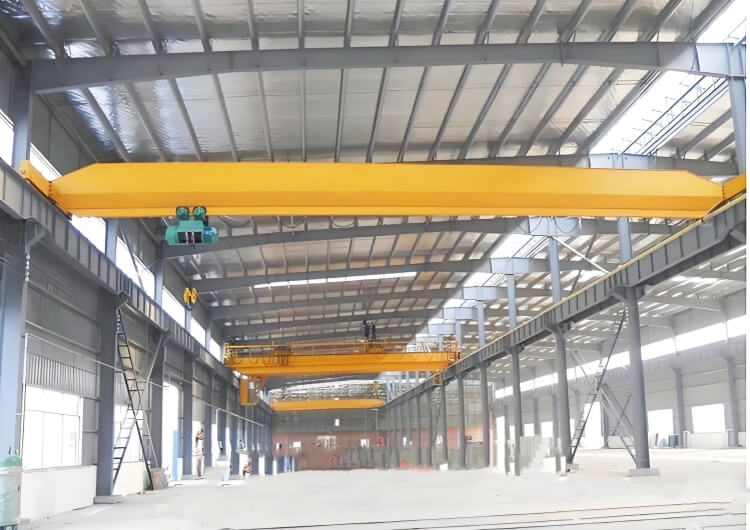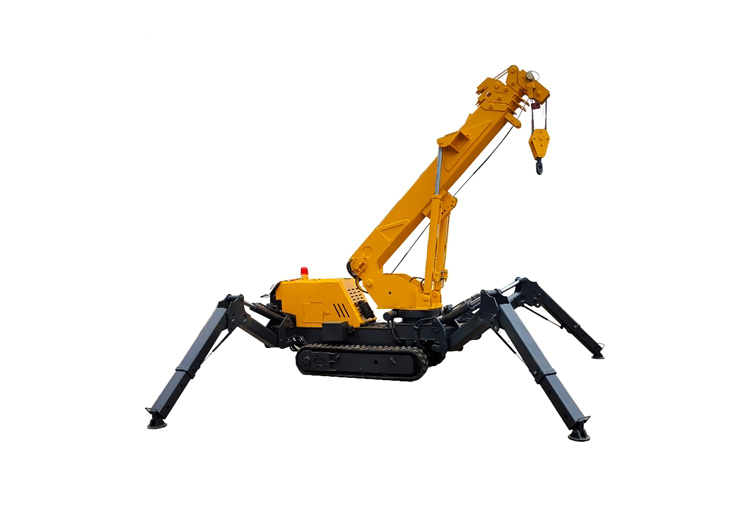Causes and Systematic Solutions for Rail Grinding Issues in Overhead Cranes
Overhead cranes play a crucial role in industrial operations, efficiently handling material movement. However, rail grinding, also known as wheel/rail wear, is a common issue that can significantly impair operational efficiency, increase maintenance costs, and pose safety hazards such as derailments. Understanding the causes and implementing effective solutions are essential for ensuring the safe and stable operation of these cranes.
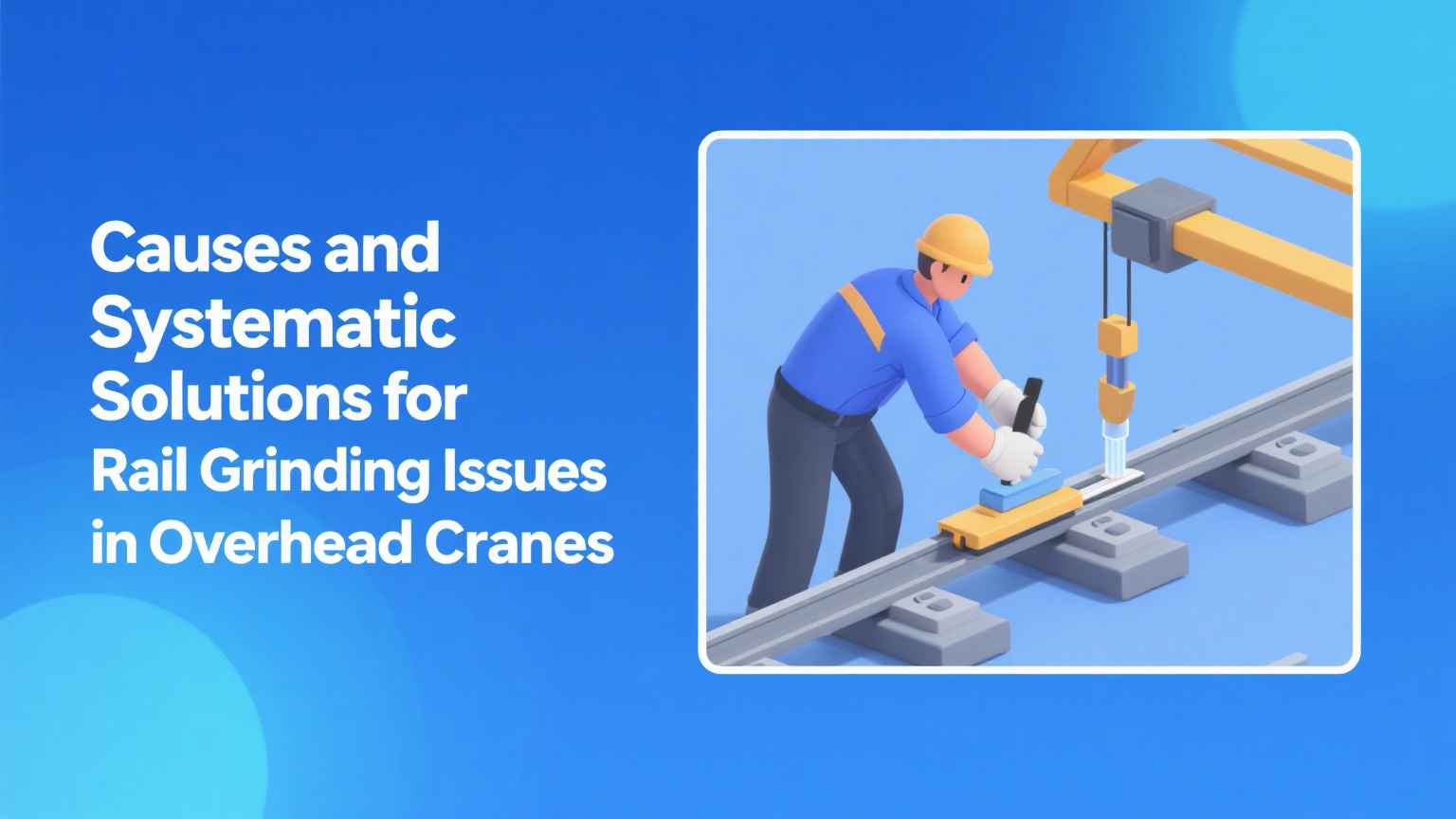
Causes of Rail Grinding in Overhead Cranes
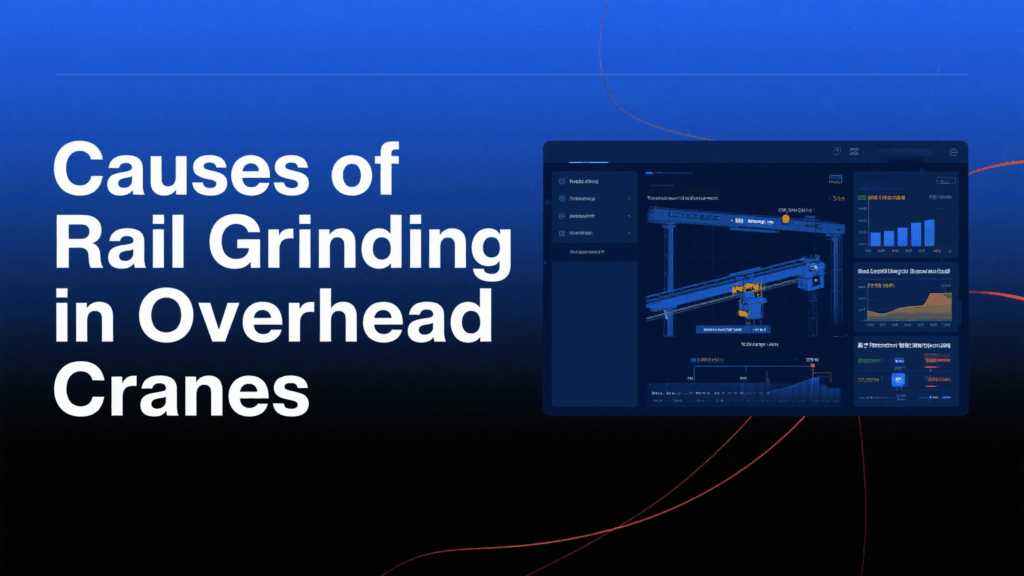
1. Track Installation Deficiencies
Improper installation of crane tracks can lead to multiple issues, including:
- Track Gauge Deviations: If the distance between tracks is inconsistent, it can force the wheels into one side of the track, leading to uneven pressure and increased wear.
- Lack of Parallelism or Straightness: Insufficient alignment of the tracks can lead to improper wheel-rail contact, causing abnormal grinding.
2. Wheel Quality Issues
Problems with the wheels can also contribute to rail grinding:
- Manufacturing Tolerances: Variations in wheel diameter or tread shape can disrupt proper contact with the track, resulting in lateral forces that cause grinding.
- Misalignment During Installation: If wheels are not installed correctly, either horizontally or vertically, the normal wheel-rail engagement is compromised.
3. Bridge Frame Deformation
Overloading the overhead crane or exposure to impacts and environmental factors can result in structural deformations. These deformations can alter the alignment of the wheels with respect to the tracks, leading to uneven force distribution and, consequently, rail grinding.
4. Faulty Drive Systems
Worn out components in the drive system can cause discrepancies in wheel speeds, leading to skewed operations:
- Uneven Brake Forces: Balancing the brake force is crucial; imbalances can lead to different speeds on each side, exacerbating rail wear.
4. Faulty Drive Systems
Worn out components in the drive system can cause discrepancies in wheel speeds, leading to skewed operations:
- Uneven Brake Forces: Balancing the brake force is crucial; imbalances can lead to different speeds on each side, exacerbating rail wear.
5. Other Contributing Factors
Several additional factors can affect rail grinding, including:
- Inappropriate Wheel Materials: Choosing the wrong materials or hardness levels can lead to excessive wear.
- Track Contamination: Dirt, debris, and oils on the track surface can hinder the normal operation of the wheels, accelerating rail grinding.
Identifying Typical Signs of Rail Grinding
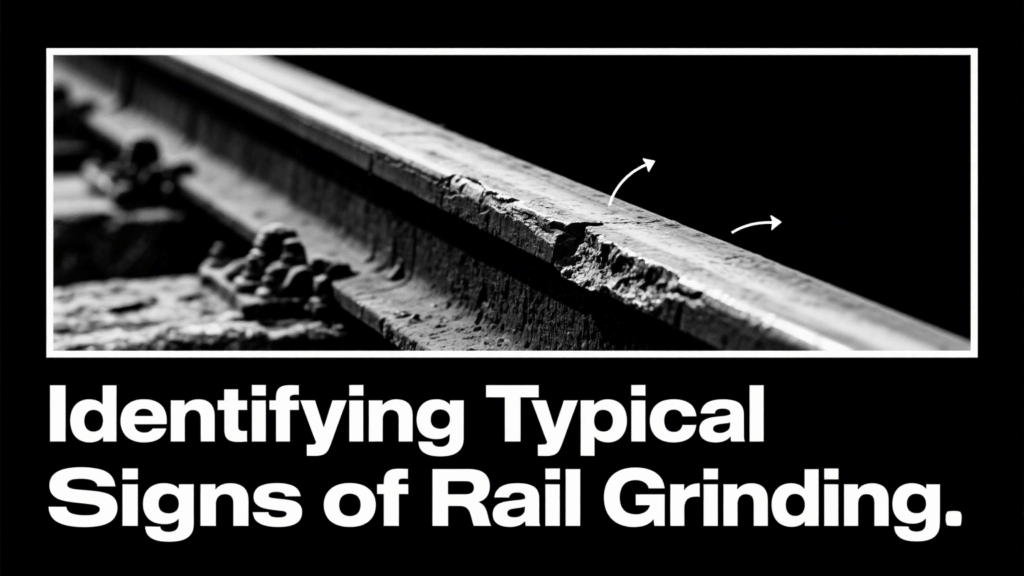
1. Unusual Noises
Any audible grinding, scraping, or clicking sounds during crane operation can be a clear indicator of abnormal wheel-rail contact that requires immediate attention.
2. Increased Vibrations
Noticeable shaking or periodic wobbling while the crane is in operation could suggest uneven load distribution and potential rail grinding issues.
3. Visible Wear Patterns
Examine the wheel treads for signs of wear, such as grooves, flat spots, or pitting, as well as abnormal wear on the side of the tracks. These are direct indicators of rail grinding.
4. Operational Anomalies
Crane operation should be smooth; signs such as stuttering movement, drifting off track, or excessive slippage during braking indicate potential problems with rail grinding.
Solutions to Address Rail Grinding Issues in Overhead Cranes
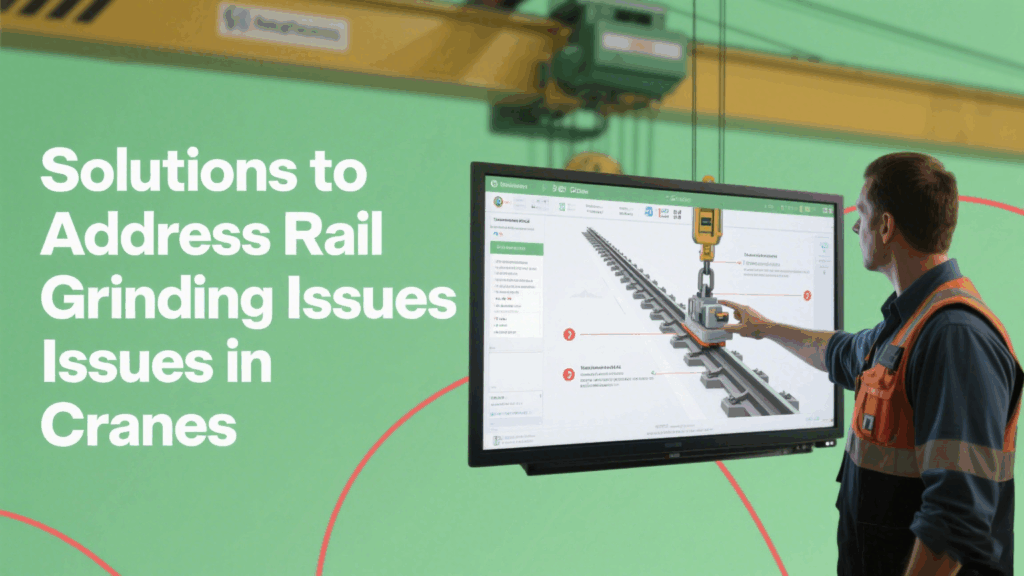
1. Comprehensive System Inspection
Utilizing tools like laser distance gauges and levels, conduct thorough measurements to evaluate:
- Track straightness, gauge deviations, and levelness
- Wheel diameter variances and tread wear
2. Precision Track Calibration
For tracks with installation errors:
- Gauge Adjustments: Employ track adjustment tools to correct deviations.
- Height Corrections: Use shims to ensure the tracks are level with a permissible error margin.
3. Structural Restoration
For deformed crane bridges:
- Implement heat straightening or mechanical correction techniques to restore original shapes.
- Reinforce structural components if necessary to maintain proper wheel-rail alignment.
4. Optimization of Wheel Assemblies
If wheel diameters differ by more than 1 mm:
- Correct dimensions through machining or replace them.
- Ensure installation angles are within acceptable tolerances to maintain quality engagement with the tracks.
5. Drive System Calibration
Inspect and adjust:
- Motor, reducer, and couplings to ensure homogeneous performance across the system.
- Brake systems should be balanced to maintain a speed differential below 2%.
6. Enhance Routine Maintenance
Establish a robust maintenance regimen:
- Regularly clear debris from tracks and lubricate wheel bearings.
- Monitor wear data weekly and conduct thorough performance evaluations quarterly.
Conclusion: Keeping Your Overhead Crane in Optimal Condition
Addressing rail grinding issues in overhead cranes is vital for maintaining operational efficiency and safety. By understanding the causes and implementing systematic solutions, operators can significantly reduce maintenance costs and prolong the life of the equipment.
At SLKJ Crane, we offer professional services tailored to optimize overhead crane performance. Our expert team specializes in inspections, fault diagnosis, and customized upgrades to meet your operational needs. If you are experiencing rail grinding issues or wish to enhance your crane’s performance, do not hesitate to contact us for professional support and solutions tailored to your requirements. Together, we can ensure your overhead crane operates safely and efficiently for years to come.
All News
Recent Posts
2025/1/25
2025/2/7
2024/8/1
Contact Us Now
Have questions about our cranes or need help?
Reach out to our friendly team for expert support and guidance.
We are here to help you power your journey towards a greener future !
Address: Crane Industry Park, Xinxiang City Henan Provice

